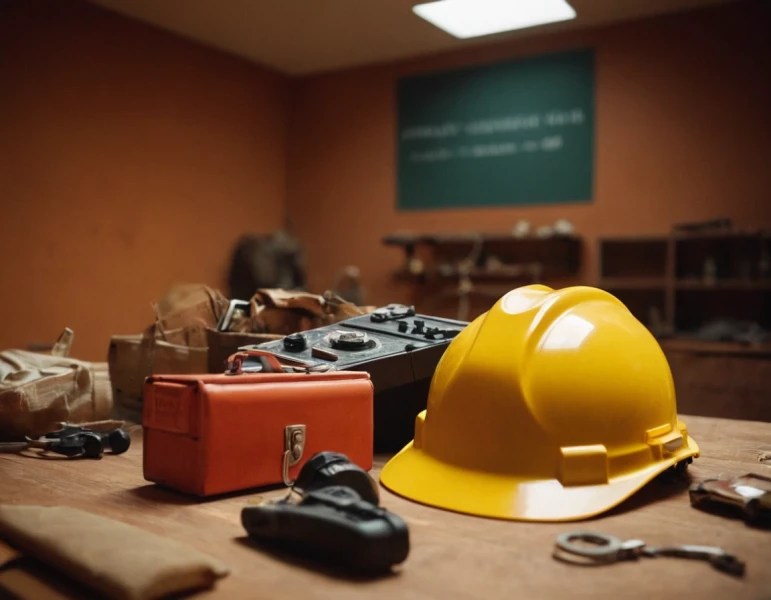Educa UNIVERSITY|HEALTH
Occupational Risk Prevention Course: What No One Tells You
Related Masters
Occupational Risk Prevention Course: What No One Tells You
When we talk about occupational risk prevention (ORP), there is a topic that is neither optional nor secondary. It is vital so that any worker, from the administrative worker to the construction worker, can perform his job safely. But it's not just about "complying with the law"; it's much more. Over the years, I have learned that prevention is your best tool to avoid accidents and work in a safe and healthy environment.
What is an Occupational Risk Prevention Course?

Basically, these courses are specific trainings designed to provide you with knowledge about safety and health at work. In Spain, they are regulated by the Law on Occupational Risk Prevention (Law 31/1995), which obliges companies to protect the health of their employees. But make no mistake: it's not just a formality or a legal formality; it's a practical tool that can make the difference between a quiet day and an accident at work.
Here's where it gets interesting: there are levels of training depending on the risk associated with the job. So, if you work in an environment where accidents can be serious or even fatal, you should be receiving advanced training.
What Types of Courses Are There and What Are They For?
In the world of ORP, a wide range of courses are offered depending on the needs of the job:
- Basic ORP Course (30-50 hours): Ideal for low-risk jobs. It is perfect for those who need general occupational safety and health knowledge, such as those who work in offices or stores.
- Intermediate ORP Course (300 hours): Goes a step further, ideal for supervisors or human resources personnel who have occupational safety responsibilities.
- Superior ORP Course (600 hours): Aimed at those who lead safety in high-risk companies, such as construction, chemical or energy industries.
With each level of training, you take away specific tools and knowledge that you apply directly in the field. This involves risk identification, potential damage assessment and emergency action plans.
Why Do You Need an Occupational Risk Prevention Course?
I'm going to be blunt: this course can save your life. You think I'm exaggerating? Let me tell you, I've seen it all. From fatal falls that could have been avoided, to chronic illnesses caused by exposure to chemicals. These courses teach you how to operate heavy machinery, what to do in case of fire or how to minimize exposure to hazardous substances.
It's not just about protecting yourself; it's a responsibility you share with your work team. Prevention starts with you, but if you know how to identify risks, you can prevent accidents on a collective level. In short, having an ORP certification not only protects you, but everyone who works with you.
What You Will Learn in an Occupational Risk Prevention Course
- Hazard Identification and Risk Assessment: You will learn how to identify potential risks in your work environment and how to assess their severity.
- Preventive and Corrective Measures: You will learn the best practices to minimize these risks.
- Applicable Legislation and Regulations: You will become familiar with the laws in force regarding PRL, such as the aforementioned Law 31/1995, on Occupational Risk Prevention.
- Emergency and First Aid Protocols: You will learn what to do in case of fire, evacuation or any other emergency.
- Employer and Worker Responsibilities: They will help you understand that responsibility is shared and that both have rights and duties in terms of safety.
The Importance of Continuous Training in PRL
It is important that PRL training does not remain in a single course. Safety laws and protocols evolve over time, and companies must offer constant updates to their employees. Imagine a construction worker who has not received training in the last five years; he may not know more current safety protocols that could save his life in an emergency.
How Much Does It Cost and How to Choose a Good Occupational Risk Prevention Course?
The prices of these courses vary greatly. You can find trainings from €90 for basic level to €1000 for advanced and accredited trainings. A good rule of thumb is to opt for courses that are certified by official institutions, such as universities or the National Institute for Safety and Health at Work (INSST) in Spain. This assures you that the content complies with national and international standards.
Training Modalities: Face-to-Face or Online?
Today, most courses offer the online modality, which makes life much easier for those who already have a full-time job. However, in the case of courses for high-risk sectors, I recommend classroom training, which allows for real practices and controlled simulations.
Benefits of Having a Certificate in PRL
Having a certificate in PRL not only protects you, but also opens doors in the labor market. Companies look for professionals who have this training because they know that they bring a plus of safety to the organization. In addition, being certified makes you stand out in sectors such as construction, mining or chemical industries, where safety is a priority.
In conclusion, occupational risk prevention courses are much more than a piece of paper or a formality; they are an investment in your life and in the lives of those around you. So, if you don't have one yet, my advice is simple: invest in your safety!
Faculties
Trainings
The faculties embrace diverse academic disciplines and fields of study, opening doors to new perspectives and exploring different spheres of wisdom in a constantly evolving world.








